Glasses to the new reality: a guide to choosing HMD
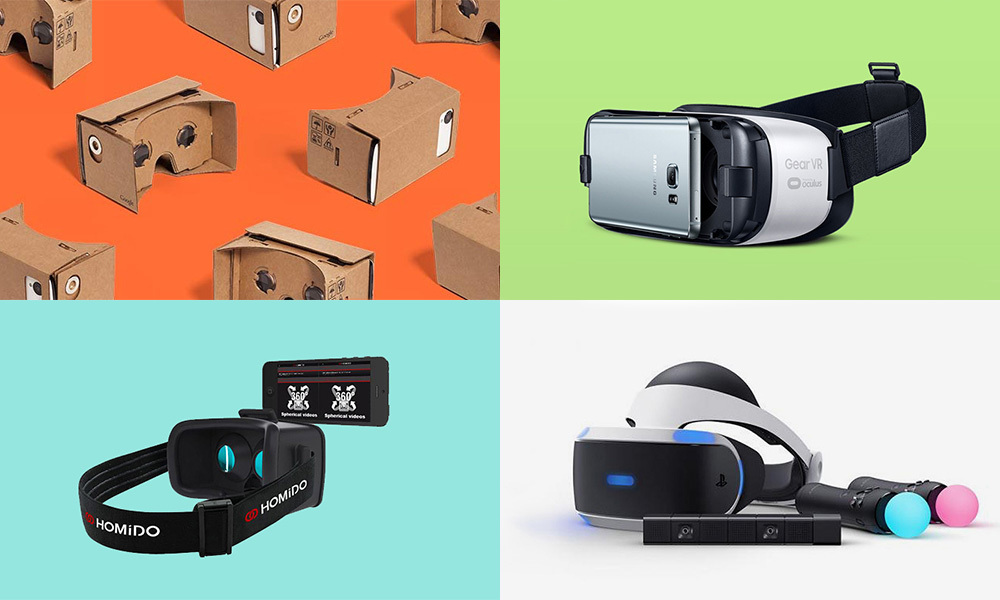
There are already quite a few articles about virtual reality devices. Some give an overview of the characteristics, others give long lists that confuse the user and do not give an idea why all this is needed, and how to navigate around this.
In fact, everything is quite simple, because The immense number of devices has only a few key differences, which determine their capabilities and functions. Below I will describe the classification that we use in our company. It gives an idea of the main types of devices on the market and how they can be optimally used.
Let's first deal with the classification. Often, when it comes to virtual reality devices, we can hear the definition of a HMD (head-mounted display) or “virtual reality helmet”. Some of the first digital virtual devices were quite cumbersome (for example, Forte VFX1 ) and really looked like helmets that completely covered my head.
Modern devices are much easier and more convenient than their predecessors, in connection with which the term virtual reality glasses (virtual reality glasses) is increasingly being used.
')
However, often the same device is called virtual reality headset . If you search for any of the 3 queries: HMD, virtual reality headset, virtual reality glasses - you will get about the same result. In order not to be completely confused in all this diversity, we classified the devices by type, choosing a conditional name for each.
We have divided the devices into 2 main types:
- Stationary virtual reality systems with an integrated display - let's call them “helmets”, because due to different comfortable mounts, they visually look quite massive, but they provide maximum immersion.
- Mobile virtual reality systems using a smartphone - let's call them “headsets”, because they, like, for example, headphones, are only part of the general mechanism of “immersion” in the world of virtual reality.
It is mobile systems that have the widest range of devices, because we, in turn, have broken them into 3 subtypes: branded, premium devices and the simplest devices.
The overall structure of our classification is as follows:
- Stationary virtual reality helmets.
- Virtual reality mobile headsets:
- the simplest;
- premium;
- branded.
Mobile headsets
Let's start with the most diverse - with headsets. We called them headsets precisely because such a system is only a shell and requires an additional device to complete the work. In fact, it is a plastic or cardboard box with lenses (in some cases with mechanisms or electronics) , which, together with your smartphone, acting as a display and computer, turns into a virtual reality device.
The advantage of all headsets is their mobility - there are no wires in them, you can always take them with you and view the content even in the plane.
A common disadvantage of such headsets is their limited performance. Not even the most top-of-the-range smartphone can yet catch up with the computer, which means that the content for such devices will have simple graphics that do not require resource-consuming miscalculations.
The undisputed leader in this category is Samsung Gear VR . It seems strange to us when it is placed on a par with other mobile headsets, because No other headset has such a set of features.
The simplest
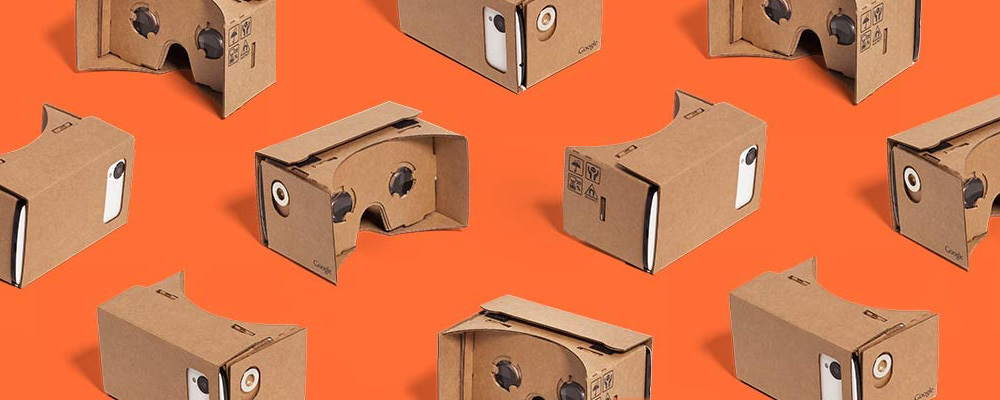
These virtual reality devices, as the name implies, are simple to implement and have the least functionality. All of them are most often a plastic or cardboard case and lenses.
Plastic solutions are usually more expensive, more durable and of higher quality.
In this article we will not do reviews of such devices, it will take a very long time, and the saying “the taste and color of all markers are different” works very well here.
It all depends on:
- your head size;
- features of vision (for example, are the glasses placed in the headset?) ;
- the dimensions of the smartphone (not any phones fit in any headset) ;
- the convenience of attaching a smartphone to a headset (sometimes, while you insert a smartphone into it, it turns off, which is annoying)
and many other ergonomic and aesthetic aspects.
pros
Plus, these headsets - an affordable price and the ability to use almost any smartphone that has enough power to run on it a virtual reality application.
Minuses
The list of minuses is somewhat more extensive:
- no guarantees of stable operation of the application, since developers do not know for sure what kind of smartphone you will use, and how powerful it is;
- lack of control - most of these solutions do not have controls, and you will need to buy a Bluetooth joystick;
- quality of head position tracking. Such headsets do not have built-in sensors, and use sensors (accelerometers and gyroscopes) of the smartphone, and may not always accurately and quickly stabilize the image. All this can affect both the quality of immersion and the comfortable perception of virtual reality;
- quality lenses - most often used simple plastic lenses of small size to reduce the cost;
- fragility - as a rule, the cardboard quickly gets dirty from contact with the skin and eventually breaks out at the attachment points of the smartphone.
The most advanced line of the simplest devices is the Cardboard or Cardboard-certified devices.
They have a similar design, sometimes also a controller simulation - a special button or a niche for a finger to press on the screen. This allows, for example, to shoot in arcade games. Also, such devices require calibration through special applications. It allows you to apply the optimal settings for your phone when using a specific virtual reality device.
The Cardboard line was originally developed by Google as a democratic device, priced at $ 20, but now there are hundred-dollar copies among Cardboard-certified devices. In Russia, you can find similar devices from 250–300₽.
In general, this is a very massive decision - such headsets are increasingly being distributed by companies as a merchandise at exhibitions and events and can be supplied with the goods, transforming from packaging, for example, flakes. This is the cheapest option for the first acquaintance with virtual reality, but - alas - far from the highest quality.

If we continue the list, there are still various variations on the theme, such as “virtual reality pince-nez” (the term is not common) . They do not close the view of the surrounding world, but are very compact, and allow you to view BP content. True, the level of immersion is not comparable with the "deaf" versions of headsets and helmets. Why we need such "pince-nez" is not very clear yet. The whole world is experimenting with BP devices - perhaps they will find their niche. In the meantime, they are represented by a rather limited number of manufacturers, in contrast to all other virtual reality headsets.
Premium
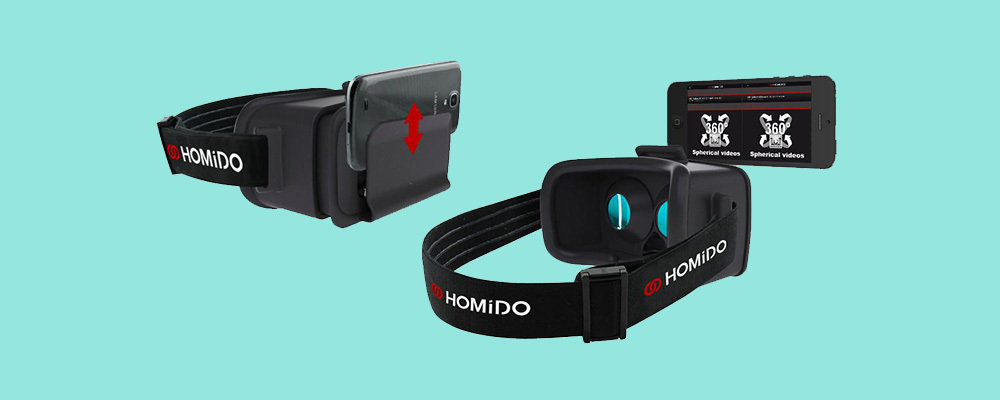
Premium devices are similar to the simplest in design - they are also suitable for most smartphones, but they are made of plastic, equipped with good lenses and have several advantages depending on the model.
For example, a key advantage of Homido glasses is their ease of use with glasses; Zeiss developed the VR One , equipped, as expected, with excellent lenses. Domestic development Fibrum comes immediately with a Bluetooth joystick, which is quite convenient.
In general, such devices duplicate the simplest, but they are more durable and provide greater comfort, because can be equipped with convenient attachments on the head, soft materials in places of contact with the face, etc. These headsets cost an average of $ 50 to $ 120.
Branded
Samsung Gear VR
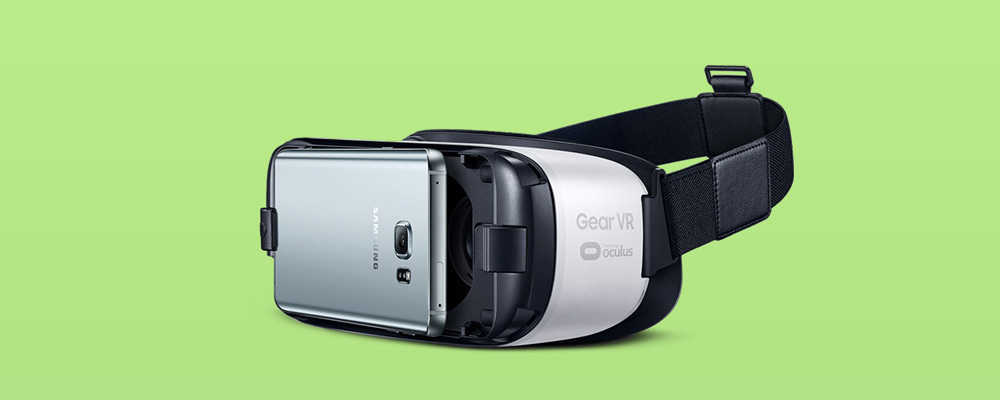
The Gear VR headset has become the most popular gadget among all virtual reality headsets with the exception of the Cardboard . However, unlike Cardboard , the quality of experience in Gear VR is significantly higher, and one of the main reasons for success is the complete compatibility of the headset with the company's smartphone line.
Compatibility in this case means not just the right size of the smartphone, as is the case with the simplest and premium devices, but compatibility with the hardware and software of the smartphone, embedded sensors, controllers and much more - i.e. full interaction of the smartphone and headset. This became possible only through the use of a single platform for developing a smartphone, a headset and creating a whole ecosystem.
What you need to know about this device?
- This is the brainchild of Samsung and Oculus .
- You can buy it in all Samsung brand stores in Russia and in some stores selling appliances.
As mentioned above, this is not just a piece of plastic - a smartphone is inserted into the headset, connecting to it, which gives you several advantages at once:
- There are several high-precision gyroscopes in the headset, and they provide the highest quality tracking of movements when using BP;
- There are controls onboard the headset: a touchpad (with the ability to swipe) , volume, a “back” button - this is very convenient, as it allows you to perform most of the necessary manipulations directly from the headset;
- The headset has a light sensor that allows you to determine whether or not granite is worn. If it is removed, the phone automatically puts the application into sleep mode, which has a good effect on saving the phone charge.
- But the most important thing is a whole ecosystem with the Oculus Store application store , where you can download the application directly to BP, with a powerful bundle at the hardware and hardware level of the phone, which ensures maximum performance for BP content.
- Available today Gear VR work with all models of the Galaxy line, as well as Note 4, Note 5.
In general, if you love Samsung , then this solution is for you - it’s best not to find a headset yet! But this is a minus - if you do not have Samsung , then ... you will have to buy it!
Detailed features of Samsung Gear VR .
The cost is $ 100, but the manufacturer periodically holds promotions and gives the headset along with the purchase of Samsung flagships.
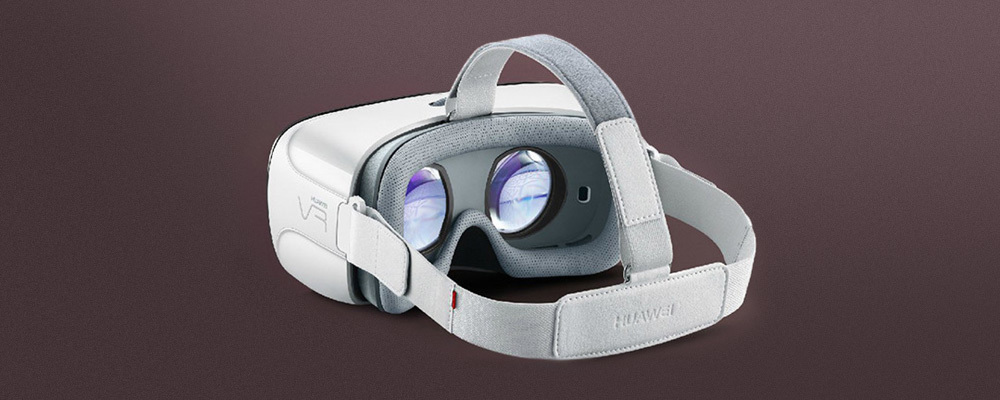
We think that in the future each major smartphone manufacturer will have its own virtual reality headset. At the moment, many people are trying to repeat the experience of Gear VR and make their own VR headsets, which will also be integrated with the smartphone and ecosystem. For example, recently released a headset from Huawei .
Stationary Virtual Reality Helmets
Despite the smaller number of representatives, the market of stationary helmets is not limited to the devices listed below, but we will focus only on completely ready-made solutions.
In general terms, stationary solutions, in the opinion of many, allow us to experience the “real” BP. This is due to the fact that stationary solutions, in comparison with mobile, allow you to play content with highly polygonal graphics, have high-quality lenses of a special shape, more FOV ( field-of-view - viewing angle), displays with a high degree of pixel density and high resolution that provides no screen-door effect (pixelated effect) .
Moreover, some devices allow you to track your position in space, which means you can physically move in virtual reality!
However, there are some costs, which are usually attributed to minuses. Fixed solutions are wired and connected to a PC or console. In the case of the PC - not everyone will do. That is, in addition to an expensive virtual reality device, it will also have to go bankrupt to a top computer. Already, there is a separate line of PCs and laptops with VR-Ready marking, the range of which is gradually expanding.
Oculus rift
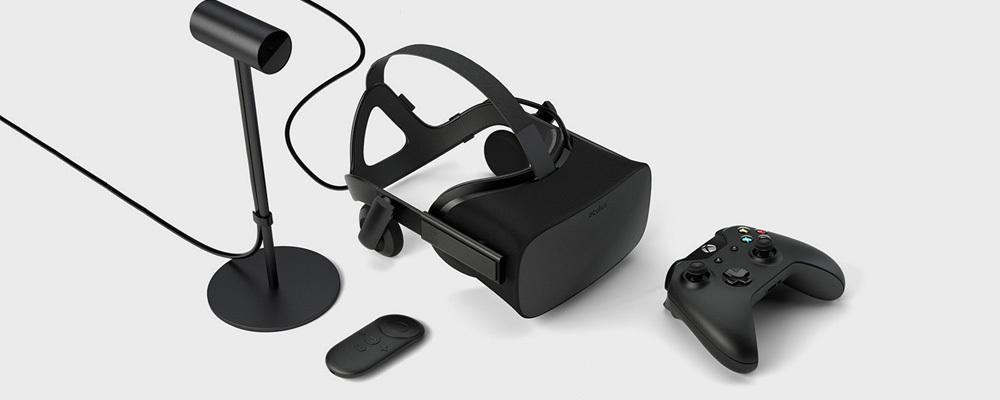
Of course, the most recognizable among all helmets is the Oculus Rift . This is a very lightweight, easy-to-use device, with high picture quality, no pixel grid (SDE effect) , with its project store — in general, fully ready for use. Many try to compare it with the developer versions (DK1, DK2) , but thanks to all the characteristics described above, the most comfortable and high-quality immersion is provided, unlike the use of the Developer Kit versions.
Oculus connects to a stationary PC . Mac is not yet supported, and most PC laptops - alas - too. This limitation is associated with high requirements for computer characteristics.
One of the attractive features of Oculus is the built-in ability to use 3D audio - the sound is not just heard from the headphones, but literally surrounds you, which creates a unique effect of total immersion.
Also, by the end of the year, the manufacturer promises to release joysticks , which, however, everyone is looking forward to now, because similar decisions are already presented at competitors.
Price Oculus Rift - $ 600.
Detailed characteristics of the Oculus Rift .
HTC Vive

Oculus direct competitor. The device also connects to the PC . However, compared to the Oculus , it has a greater ability to track user movements thanks to the Lighthouse technology. 2 sensors will allow you to move freely in the space of 4 × 4 m. Also, the advantage of HTC are their controllers, which are already actively used in various projects for this platform.
With Vive, you can literally walk around the house or look around the corner, draw a virtual picture with your hands and much more.
Price - $ 800 for the whole set: helmet, motion sensors, 2 controllers.
Detailed specifications of the HTC Vive .
Sony PlayStation VR

This device, first of all, is focused on owners of the PS4 consoles or on those who are going to get them. This is a definite plus, since you do not need to buy any special computer. In the presence of the console - it remains only to buy a PlayStation VR, which will cost $ 400, with a set of controllers - $ 500.
The number of PS4 owners is extremely large, and Sony is making rather optimistic plans to sell several million BP devices after launch, which seems quite realistic, since the price threshold for entry is significantly lower than its competitors. It is for this reason that they can be ranked as one of the most anticipated BP releases of 2016.
Detailed specifications of the Sony PlayStation VR .
The main list ends here, but the market is constantly replenished with something new; every day new projects, VR cameras and devices come out. Of course, the more actively BP develops, the faster the classifications will settle down, and the easier and clearer the choice will be.
We brought our own vision, which allows us to clearly understand the differences and functionality of platforms and devices. I hope this material will help you.
Thanks to Tase Nagina and Egor Berdnikov berdnikov for their help in preparing the material.
Source: https://habr.com/ru/post/393119/
All Articles